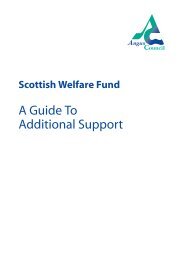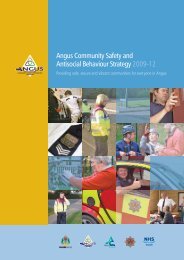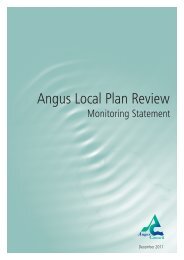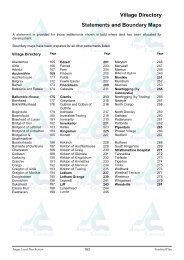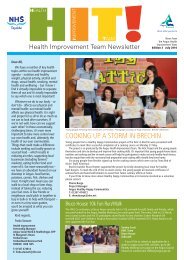Support Children and Young People at Risk of Self Harm and Suicide
Support Children and Young People at Risk of Self Harm and Suicide
Support Children and Young People at Risk of Self Harm and Suicide
Create successful ePaper yourself
Turn your PDF publications into a flip-book with our unique Google optimized e-Paper software.
Moder<strong>at</strong>e <strong>Risk</strong><br />
❏ Current self-harm<br />
is frequent <strong>and</strong><br />
distressing.<br />
❏ Situ<strong>at</strong>ion felt to<br />
be painful, but no<br />
immedi<strong>at</strong>e crisis.<br />
❏ Suicidal thoughts<br />
may be frequent but<br />
still fleeting with<br />
no specific plan or<br />
immedi<strong>at</strong>e intent to<br />
act.<br />
❏ Evidence <strong>of</strong> current<br />
mental health<br />
problem, especially<br />
depression, anxiety<br />
or psychosis.<br />
❏ Drug or alcohol use,<br />
binge drinking.<br />
Action<br />
❏ Ease distress as far as possible.<br />
❏ Emp<strong>at</strong>hic listening.<br />
❏ Joint problem solving to resolve difficulties.<br />
❏ Consider safety <strong>of</strong> young person, including<br />
possible discussion with parents/carers or other<br />
significant figures.<br />
❏ Use/review safety plan.<br />
❏ Seek specialist advice.<br />
❏ Discuss with Primary Mental Health worker,<br />
Tayside self-harm nurses, Child & Adolescent<br />
Mental Health Service, Educ<strong>at</strong>ional Psychologist<br />
or advise talking with GP.<br />
❏ Consider consent issues for the above.<br />
❏ Consider support for others who know about<br />
the self-harm (peers/parents).<br />
❏ Consider increasing levels <strong>of</strong> support/<br />
pr<strong>of</strong>essional supervision.<br />
❏ Ensure there is ongoing support for child/young<br />
person <strong>and</strong> review <strong>and</strong> reassess <strong>at</strong> agreed<br />
intervals.<br />
❏ Link person to existing resources.<br />
High <strong>Risk</strong><br />
❏ Increasing self-harm,<br />
either frequency,<br />
potential lethality or<br />
both.<br />
❏ Situ<strong>at</strong>ion felt to be<br />
causing unbearable<br />
pain or distress.<br />
❏ Frequent suicidal<br />
thoughts, which are<br />
not easily dismissed.<br />
❏ Specific plans with<br />
access to potentially<br />
lethal means.<br />
Action<br />
❏ Ease distress as far as possible.<br />
❏ Emp<strong>at</strong>hic listening.<br />
❏ Joint problem solving to resolve difficulties.<br />
❏ Review safety plan.<br />
❏ Discussion with parents/carers or other<br />
significant figures.<br />
❏ Involve GP for possible referral to Tayside selfharm<br />
nurses <strong>and</strong>/or seek CAMHS referral.<br />
❏ Consider consent issues for referrals.<br />
❏ Consider support for others who know about<br />
the self-harm (peers/parents).<br />
❏ Consider increasing levels <strong>of</strong> support/<br />
pr<strong>of</strong>essional input.<br />
❏ Link person to existing resources.<br />
(continued overleaf)<br />
15




